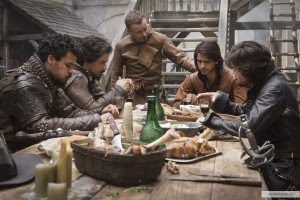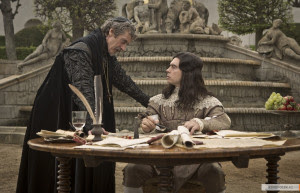
TIME MACHINE: ARMISTICE OF 11 NOVEMBER 1918
This month, November 2018, marked the 100th anniversary of armistice that was signed between the Allied/Entente Powers that included Great Britain, France, Italy and the United States and Germany, the remaining member of the Central Powers. This armistice ended the fighting in World War I.
By late September 1918, war had waged between the Allied Powers and the Central Powers in Europe, the Middle East and Africa for roughly over four years. On the 28th of that month, the German Supreme Army Command had met with Kaiser Wilhelm II and the Imperial Chancellor, Count Georg von Hertling at the Imperial Army Headquarters at Spa in occupied Belgium. The Command had informed the Kaiser and the Imperial Chancellor that the military situation facing Germany was hopeless. Quartermaster General Erich Ludendorff, probably fearing a breakthrough, claimed that he could not guarantee that the Germany's front would hold for another two hours and demanded a request be given to the Entente for an immediate ceasefire. Then news came of the signing of the Armistice of Salonica at Thessaloniki, Greece; between Bulgaria and the Allied Powers on September 29, 1918. The Central Powers had lost one member of its alliance and the war hostilities ceased on the Bulgarian front.
Prince Maximilian of Baden replaced Georg von Hertling as Chancellor of Germany on October 3, 1918 in order to gegotiate an armistice. Two days later, the German government sent a message to U.S. President Woodrow Wilson to negotiate terms on the basis of his Fourteen Points. The points or Wilson's demands included the retreat of Germany from all occupied territories, the cessation of submarine activities and Kaiser Wilhelm's abdication.
Then on October 17, 1918; the Allied forces made its final push towards the German border. While the British, French and American armies advanced, the alliance between the Central Powers began to collapse. The Ottoman Empire (Turkey) signed the Armistice of Mudros on October 30, 1918; ending the hostilities in the Middle East. On November 3, Austria-Hungary signed the Armistice of Villa Guisti with Italy, ending hostilities on the Italian front on the following day, November 4.
By mid-to-late October, Germany began to crumble from within. Faced with the prospect of returning to sea, the sailors of the High Seas Fleet stationed at Kiel mutinied on October 29. Within a few days, the entire city was under their control and the revolution against the empire spread throughout the country. On November 9, 1918; Kaiser Wilhelm II abdicated from Germany's imperial throne. The former monarch slipped across the border into the Netherlands and remained in exile until his death in 1941, at the age of 82. A German Republic was declared and peace feelers extended to the Allies. Also on November 9, Max von Baden handed over the office of Chancellor to Friedrich Ebert, a Social Democrat. Ebert's SPD and Erzberger's Catholic Centre Party had enjoyed an uneasy relationship with the Imperial government since Bismarck's era in the 1870s and 1880s. They were well represented in the Imperial Reichstag, which had little power over the government, and had been calling for a negotiated peace since 1917.
In the end, the Armistice proved to be a rushed process. The German delegation headed by Matthias Erzberger crossed the front line in five cars and traveled under escort for ten hours across the devastated war zone of Northern France. They arrived on the morning of November 8, 1918 and were taken to the secret destination aboard the Allied Powers' Supreme Commander Marshal Ferdinand Jean Marie Foch's private train parked in a railway siding in the forest of Compiègne. The Germans were handed the list of Allied demands and given 72 hours to agree. The latter included complete German demilitarization, immediate evacuation of occupied territory, surrender of weaponry, vacated territory to be occupied by Allied troops at Germany's expense, and evacuation of German forces in Africa. The Germans were able to correct a few impossible demands (for example, the decommissioning of more submarines than their fleet possessed), extended the schedule for the withdrawal and registered their formal protest at the harshness of Allied terms. But they were in no position to refuse to sign.
On Sunday 10 November, the German delegation received news of the Kaiser's abdication and departure via Parisian newspapers shown to them. That same day, Ebert instructed Erzberger to sign the armistice. The cabinet had earlier received a message from the German Army Supreme Commander Paul von Hindenburg, who requested that the armistice be signed even if the Allied conditions could not be improved on. Germany and the Allied Powers agreed at 5:00 am on November 11, 1918, to sign the Armistice of Compiègne. It became effective at 11:00 am (Paris time).
The armistice went through prolongation (extension) three times - between November 11, 1918 and January 10, 1920 - before it was finally ratified on that final date at 4:15 pm. Also ratified on that date was the Treaty of Versailles, which brought a final end to World War I. Celebration of the Armistice became the centerpiece for the war's memories, along with salutes to the unknown soldier. Nations built monuments to the dead and the heroic soldiers, but seldom to the generals and admirals. November 11 is commemorated annually in many countries under various names such as Armistice Day, Remembrance Day, Veterans Day, and in Poland it is Independence Day.
For more information on the Armistice of Compiègne, read the following book:
*"Peace at Last: A Portrait of Armistice Day, 11 November 1918" (2018) by Guy Cuthbertson























































